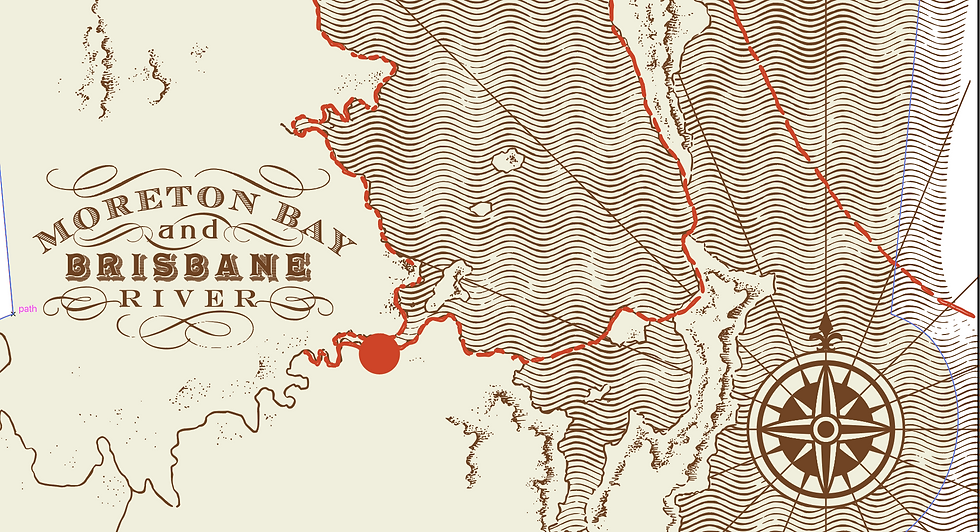BROWN SNAKE RUM - NOW PREMIUM DECANTER WITH CORK
ADD 3 TO CART FOR WHOLESALE PRICE

QUEENSLAND RUM
Distilled in the heart of Brisbane, Queensland, our Agricole rum is a true Australian treasure, made exclusively from freshly harvested Queensland sugar cane juice. This unique rum captures the grassy, vibrant character of the cane, delivering a pure and fresh flavour that’s distinct from traditional molasses-based rums. For a taste of Queensland’s tropical bounty, our Captain Moreton Pineapple Spiced Rum is distilled with the bold locally sourced botanical exclusive to us: Pineapple Myrtle™, creating a refreshing and exotic twist. Whether enjoyed neat, on ice, or in your favourite cocktail, these rums celebrate the best of Brisbane’s sun-soaked landscapes and unique botanicals.
RUM by Queensland Distillery

Captain Moreton Rum
An incredible story of Rum in Moreton bay


In the early 19th century, the Moreton Bay area in Queensland, Australia, was largely unknown to Europeans. The indigenous Aboriginal people had been living in the region for thousands of years, cherishing its beauty and resources. Amidst this backdrop, a convict named Thomas Pamphlett emerged as one of the first Europeans to live in the Moreton Bay area, and his fascinating story is deeply connected to the foundation of our Captain Moreton's Rum School.
Thomas Pamphlett, a mariner of questionable expertise, and convict, found himself shipwrecked off the coast of Moreton Island in 1823. Stranded and without supplies, he managed to survive with the help of the local indigenous people, who introduced him to their knowledge of the land and its resources. The story of Thomas Pamphlett and his connection to rum encapsulates the pioneering spirit of Queensland, making it an integral part of the region's history.
"If ever there was a chap deserving of honorary rank, then it was he.."
Born in England around 1788, Pamphlett became a brickmaker in Manchester. In 1810, he was charged with stealing a horse and five pieces of woollen cloth. The Justices of Assize sentenced him to 14 years' transportation to New South Wales. After a series of escapes and recaptures, he found himself in the Hawkesbury River area west of Sydney, where he worked on the river in some capacity.
In March 1823, Pamphlett, along with fellow "ticket of leave" convicts Richard Parsons and John Thompson, and full convict John Finnegan, were hired by settler William Cox to fetch cedar from the Illawarra District, now known as Wollongong, south of Sydney. They set sail on their maiden voyage in an open boat 29 feet in length and 10 feet in beam. On board were large quantities of pork and flour, as well as five gallons of rum to buy cedar from the timber cutters, and four gallons of water.
The presence of rum on their boat journey illustrates the importance of this spirit in the early days of Australia's colonization. As a form of currency and a means of social bonding, rum was a valuable commodity in the fledgling colony. Pamphlett and his crew relied on the spirit to trade for timber, showcasing its significance in the region's development.
As fate would have it, their boat journey took an unexpected turn. A strong breeze blew them off course, and they were lost at sea for days. The wind became stronger, heavy rain fell, and it got dark. They were blown further out to sea, with their supply of water and rum dwindling. Prevailing winds and currents may have taken them most of the way across the Tasman Sea toward New Zealand.
Lost and disoriented, they thought they had drifted south and headed northwest to try to get back to Illawarra and Sydney. On their twenty-second day at sea, Pamphlett spotted land, Cape Byron! Upon reaching Moreton Island, they set off along the beach, hoping to find their way back to civilization.
During their months-long ordeal, they spent time with several Aboriginal groups who fed them fish and fern root. The indigenous people thought the castaways were the ghosts of dead ancestors due to their pale color. Pamphlett and his companions gained valuable knowledge from the local tribes, which would later prove instrumental in the establishment of the Moreton Bay colony.
Pamphlett's rescue by explorer John Oxley led to the discovery of the Brisbane River and the establishment of a new colony at Moreton Bay in 1824. Ironically, Pamphlett, an ex-convict, committed another crime and was sentenced to seven years at the new settlement, which eventually became Brisbane.




